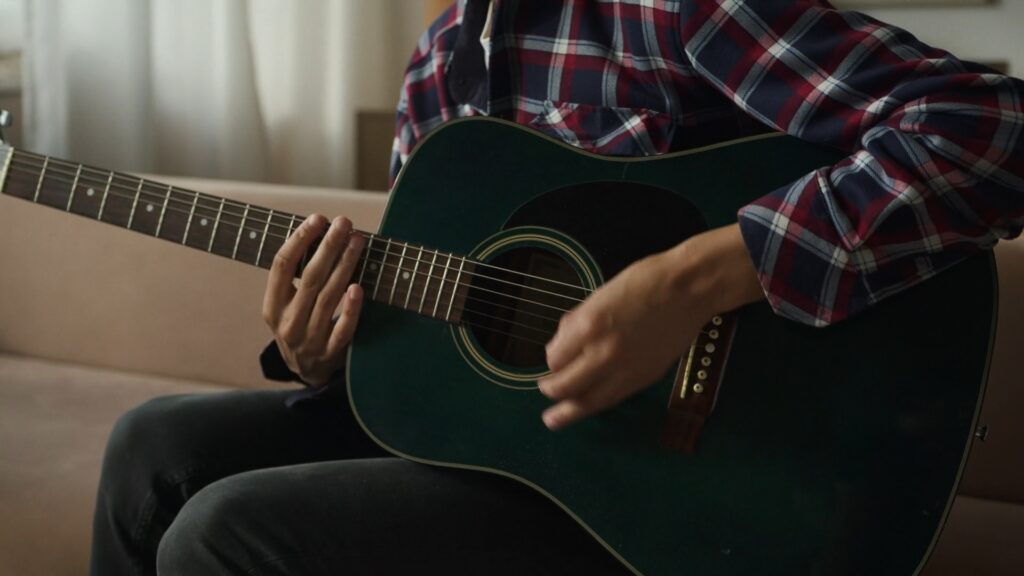As a guitarist, it’s important to have a variety of techniques at your disposal to create dynamic and interesting sounds. Two techniques that are often used to control the sound of a guitar are muting and palm-muting. Although similar, these techniques have distinct differences and are used in different situations. In this article, we’ll explore the difference between muting and palm-muting and provide tips on when to use each technique.

Muting is a technique where you stop the strings from vibrating using your picking hand or other parts of your body such as your fretting hand. There are several ways to mute a guitar string, including using your palm, fingers, or even your elbow. Muting is used to create a staccato sound or to stop unwanted string noise. It’s an essential technique to master for any style of playing, from jazz to metal.
Palm-muting is a specific type of muting technique where you use the palm of your picking hand to mute the strings. Palm-muting creates a percussive sound that is perfect for playing heavy and rhythmic parts. To palm-mute a string, rest the side of your palm on the bridge of your guitar and apply enough pressure to stop the string from vibrating. The amount of pressure you apply will determine the amount of sustain and volume of the muted note.
The main difference between muting and palm-muting is the way the strings are muted. With muting, you can use various parts of your body to stop the strings from vibrating, whereas palm-muting is specifically done with the palm of your picking hand. Additionally, palm-muting creates a more percussive and muted sound than regular muting, which can create a more staccato sound.
So when should you use each technique? Muting is useful in situations where you want to create a short, staccato sound. For example, in funk or jazz playing, you may want to use muting to create a tight and rhythmic sound. Muting is also essential when playing with distortion or high gain because it helps to stop unwanted string noise.
Palm-muting, on the other hand, is useful in situations where you want to create a percussive and muted sound. Palm-muting is commonly used in rock and metal music to create heavy and rhythmic parts. You can also use palm-muting to create a muted bassline, where you play muted notes on the lower strings of the guitar.

One important thing to keep in mind when using either technique is the placement of your hands. When muting, make sure your fingers are resting lightly on the strings, so they are ready to stop any unwanted string noise. When palm-muting, make sure your palm is resting on the bridge of the guitar and not on the strings themselves. This will ensure you get the right amount of pressure and create the desired sound.
Muting and palm-muting are both essential techniques for guitarists to master. Although similar, they have distinct differences and are used in different situations. Muting is used to create a short, staccato sound or to stop unwanted string noise, while palm-muting is used to create a percussive and muted sound that is perfect for heavy and rhythmic parts. By mastering these techniques, you’ll be able to create a variety of dynamic and interesting sounds on your guitar.